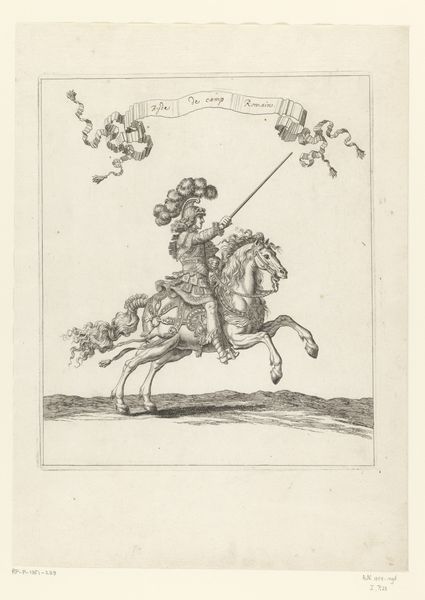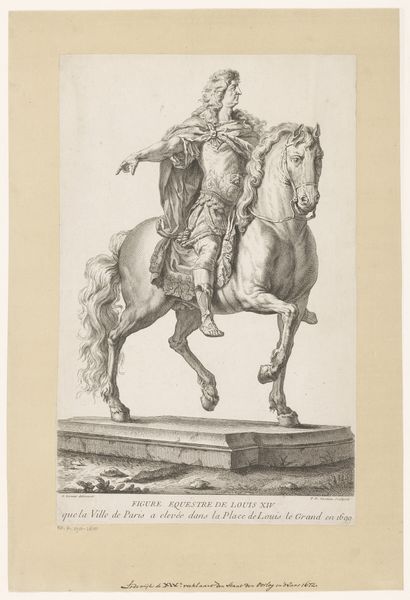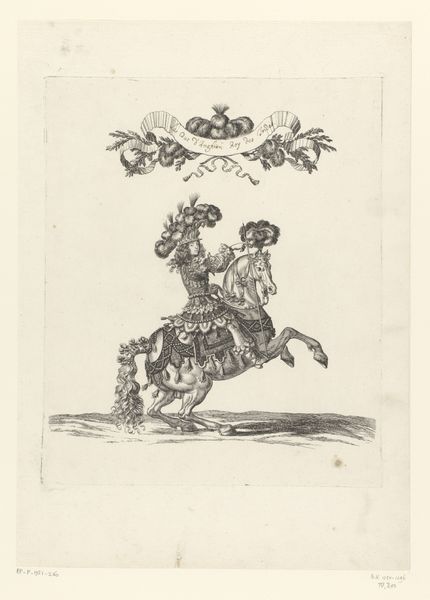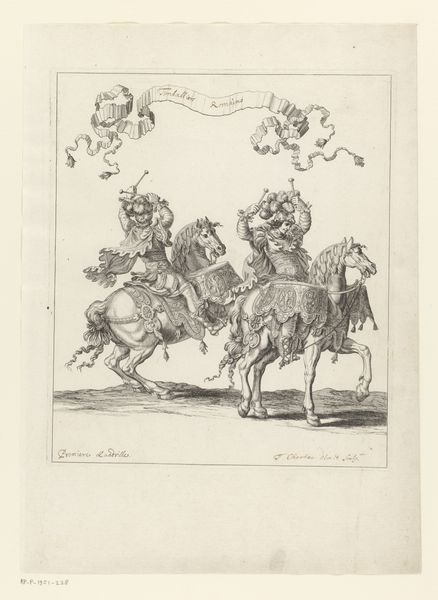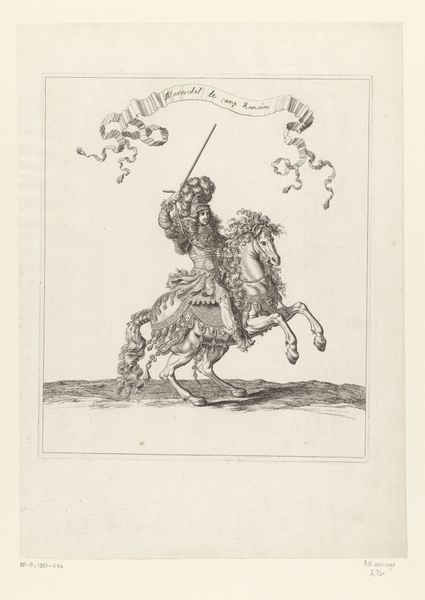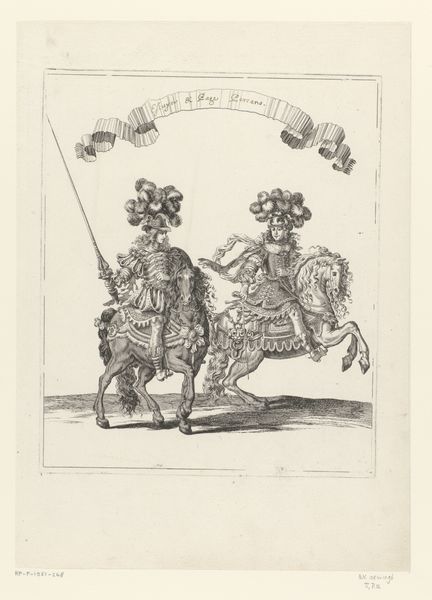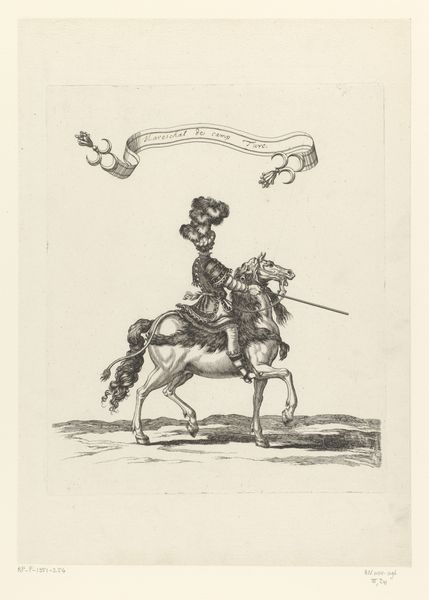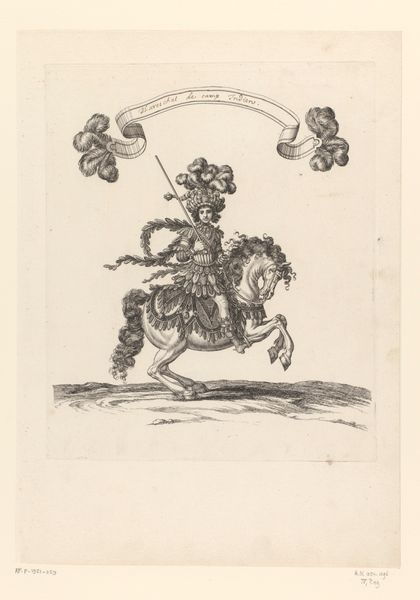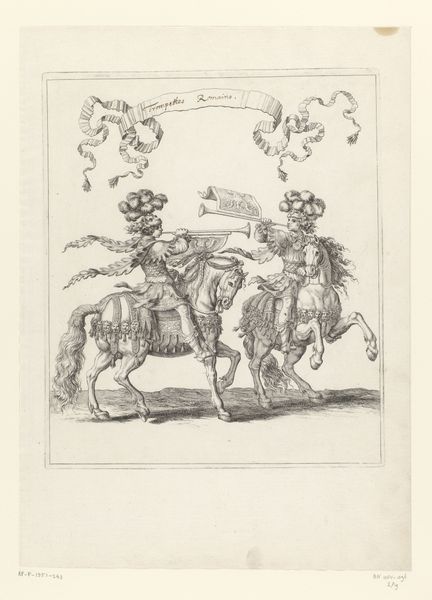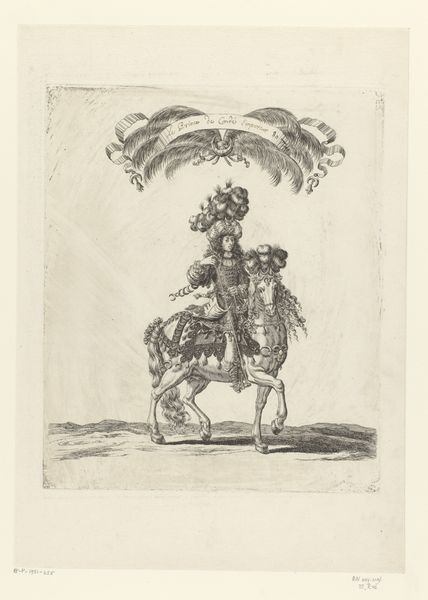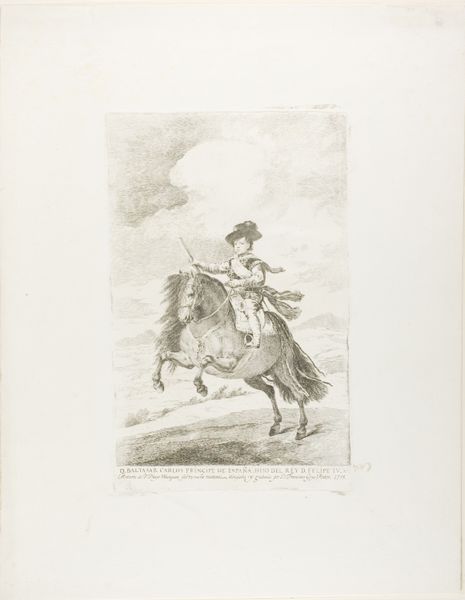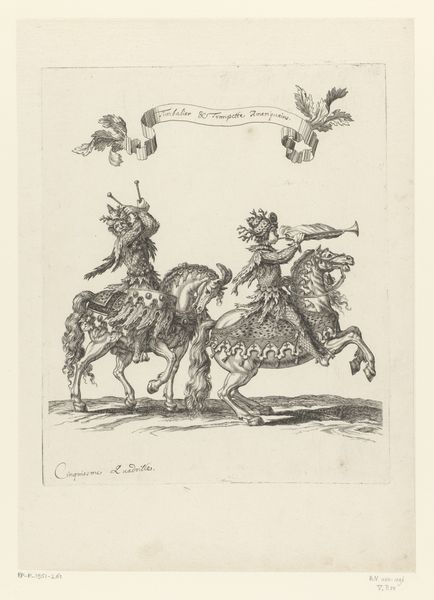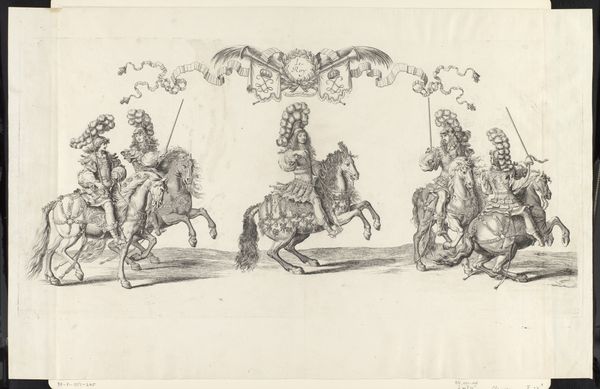
ink, engraving
#
portrait
#
baroque
#
pen illustration
#
pen sketch
#
old engraving style
#
ink
#
ink drawing experimentation
#
horse
#
history-painting
#
engraving
Dimensions: height 312 mm, width 260 mm
Copyright: Rijks Museum: Open Domain
Curator: Here we have François Chauveau's "Filips II, hertog van Orléans, te paard in Perzisch kostuum," created around 1670, rendered meticulously in ink through engraving. Editor: What strikes me first is the extravagance! The sheer, overwhelming ornamentation—on both the rider and mount. It's a spectacle of wealth and power, carefully calibrated. Curator: Indeed. The piece reveals a fascinating tension. Formally, note how the artist orchestrates a dance of lines, from the intricate lace to the horse's flowing mane and tail. The composition emphasizes a pyramidal structure, grounding the flamboyant figure with a sense of stability. The delicate cross-hatching, creating tonal variation, should be considered also. Editor: Beyond aesthetics, it's fascinating how clothing signifies status. The 'Persian costume,' itself an orientalist fantasy, becomes a symbol of the Duke's global aspirations and cultural reach. It also speaks to the trend of "Turquerie", the incorporation of Turkish and more broadly Middle Eastern elements in European art. We can see these interests echoed across paintings of this period, for example the portraits that demonstrate connections with the Ottoman empire. Curator: Yes, and consider the horse—a powerful symbol throughout history. Here, it is meticulously adorned, almost weighed down, suggesting controlled strength, an important feature of Baroque aristocratic imagery. Editor: The rearing stance—so common in equestrian portraits. Its history stretches back to antiquity and persists, it signals ambition, mastery, and domination, qualities invariably linked with the sitter. Curator: And yet, there's an undeniable lightness to the drawing, a delicacy achieved through the engraving technique itself. Editor: The portrait also speaks to this moment in history. The Duke of Orléans, dressed in exotic costume astride a powerful horse. Power! Such a visual marker of personal status, political statement and wealth combined. Curator: By analyzing the compositional elements and considering the intricate details of the lines, the artwork’s construction contributes to the potent, intended impression of dominance. Editor: Absolutely. It prompts us to consider not just the visible opulence, but the historical and cultural narratives woven into it. Curator: Indeed, a fascinating dialogue between form and symbol, which gives deeper context to both our understanding of Baroque art, and historical realities.
Comments
No comments
Be the first to comment and join the conversation on the ultimate creative platform.
